Reading Time: 14 minutes
Mitali tells us about Chinese history, culture, temples and people, travelling through four Chinese capitals. She chronicles massacres and cruelty along with beauty and wonder. An exclusive for Different Truths.

There are places you know that you want to visit and there are those you don’t want to visit. Nanjing fell into the latter category for me. But, as the distance between Suzhou and Nanjing was supposed to be only two-and-a-half hours by road, we decided to do a post-Christmas trip in 2008 — just one of those short getaways.
Listed as one of the Four Great Ancient Capitals1 of China from 1920 to 1937, it had been the centre of the Kuomintang, Sun Yat Sen’s15 party, till the Nanjing Massacre2. And that was the reason I did not want to visit it – it seemed to be a city filled with mausoleums on the Purple Mountain. I had wanted to visit those parts of history that stand out for exhibiting love, tolerance, and humaneness. Here was a city whose historic greatness lay in the remnants of the darker stains in the story of man. The place had all the relics, mass graves from the massacre by the Japanese army, and more mausoleums. Nanjing had been recognised as capital in 229BCE before Shi Huang Di unified the whole region. Shi Huang Di had his capital in Xian where the terracotta warriors still guard his grave.
Listed as one of the four Great Ancient Capitals of China from 1920 to 1937, it had been the centre of the Kuomintang, Sun Yat Sen’s party, till the Nanjing Massacre. And that was the reason I did not want to visit it – it seemed to be a city filled with mausoleums on the Purple Mountain. I had wanted to visit those parts of history that stand out for exhibiting love, tolerance and humaneness. Here was a city whose historic greatness lay in the remnants of the darker stains in the story of man.
We went for a boat ride I remember, despite Surya’s protests, to experience the history of Nanjing. And then the guide on the cruise told us how the Yellow Emperor had been on his last journey via Nanjing returning to Xian and died on the way. Nanjing was a part of his kingdom. The guide elaborated on what I had read in many places, including John Man’s Terracotta Warriors 3 – he died along the way. No one knows if he was murdered or died of natural causes but to conceal his death from the local populace, they carried putrid fish to cover the stench emanating from his corpse! And thus, he found his way to the elaborate grave he had made for himself in Li Shan, Xian. Between the Japanese massacre and the first Qin emperor’s story, I felt a bit queasy about the history of this ancient and not so ancient capital.
We had come to Nanjing for two nights. The night we reached we took the historic cruise. Though we had started in good time from Suzhou, our driver got hopelessly lost in Nanjing, which is why darkness shrouded our cruise and our four-year-old whined to the rhythms of the waves.
Nanjing left us with faint memories of mists, hairpin bends, and almost no photographs except for a few hazy ones. It was not like the other capitals we visited during our sojourn for eight years. The other three great capitals that we visited were Xian, Beijing, and Luoyang. Luoyang had the strongest intermingling of Indian and Chinese history and was the swansong of our holidays in China. It was the last place we visited before we returned to Singapore for good.
The next day we went to the scenic mountain3. It was so misty that the ride on the ropeway was closed. We wound our way up to the observatory on top of the hills. The observatory was built in 1934 CE4, much newer than the one we saw in Beijing that October. That observatory was built in 1442CE5. Our driver took in hairpin bends and blind corners – it was almost like one of the horrific rides I had mentioned earlier. We reached there to find it closed. Surya was cheerful this morning and ran around the misty mountain till we dragged him back to the waiting car. As we were not interested in visiting the darker shades of history, especially with children in tow, we descended to the non-historic zoo.
Nanjing left us with faint memories of mists, hairpin bends, and almost no photographs except for a few hazy ones. It was not like the other capitals we visited during our sojourn for eight years. The other three great capitals that we visited were Xian, Beijing, and Luoyang. Luoyang had the strongest intermingling of Indian and Chinese history and was the swansong of our holidays in China. It was the last place we visited before we returned to Singapore for good. We had travelled to all the other three great ancient capitals by then – Beijing, Xian, and Nanjing. Luoyang would complete all four.
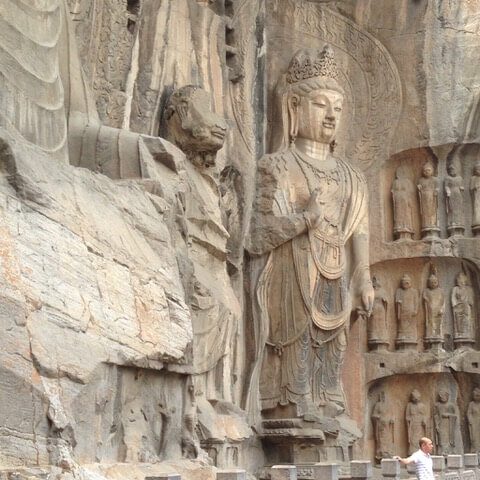
Luoyang was founded in the mid 11th century BCE. It has a rich history of Buddhism which travelled from India with monks7. The Buddhists made caves that have come down to us as Longmen Grottoes. This is what Aditya wanted to see. My husband wanted to visit the original Shaolin monastery that has major links to a couple of Indian monks, one of them being a prince by birth. Surya wanted most of all to visit the stalactite caves in the neighbouring county of Luanchan. We had visited such a cave in Guilin, called the Reed Flute cave. We decided to satiate the youngest member of our family first. So, the stalactite-stalagmite cave it was, on the first day.
We found a driver who spoke Mandarin, the local dialect is a throwback from the BCEs called Zhongyuan Mandarin8. The driver ferried us from the airport to the hotel. He was also willing to take us around for the next few days. We fixed with him to pick us up from the hotel the next morning at 10.30 am.
There was only one hotel in Luoyang, in 2014, that seemed to cater western breakfasts. And as I said earlier, my threesome always thought much of the morning meal while starting out on a holiday. So, we went to that one hotel. A major discovery that we made was that the staff spoke almost no English. We were given a huge suite and a warm welcome. Eventually, we noticed there were hardly any tourists of non-Chinese origins in the hotel and, subsequently, we noticed, in the town.
There was only one hotel in Luoyang, in 2014, that seemed to cater western breakfasts. And as I said earlier, my threesome always thought much of the morning meal while starting out on a holiday. So, we went to that one hotel. A major discovery that we made was that the staff spoke almost no English. We were given a huge suite and a warm welcome. Eventually, we noticed there were hardly any tourists of non-Chinese origins in the hotel and, subsequently, we noticed, in the town. The Western breakfast was laced to satisfy the palate of high-end Chinese clientele. But we did have a good meal before we started on our two-hour journey to the caves.
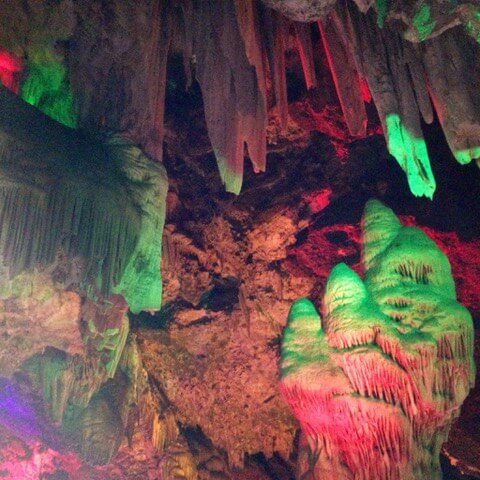
The journey was through hills and very scenic. When we reached the Jinguan caves9, as our driver parked the car, the security and he exchanged what seemed to me to be rapid speech in the local dialect. He told Aditya, who was our family translator for his excellent grasp of Mandarin, that we needed to buy tickets and take a tram to the caves and then come straight back. He was very vehement that we should not wander anywhere else. We went to the ticket booth, bought the tickets and took the tram which dropped us at a trolley station. The trolley took us up to the caves.
The caves had interesting formations and were huge. We were asked to follow a guided group. They told us we could be lost in the cave if we went on our own. So, follow we did. And we saw some amazing formations, though the lights were a trifle garish. When we exited from the cave and subsequently, from the trolley that took us back, we wanted to have some family pictures taken. We saw a bunch of security personnel looking at us. A common occurrence in parts of China that are less frequented by tourists, I thought. We asked them to photograph the family. They obliged.
Then, they told us to leave. They escorted us back to our waiting car. We were totally flabbergasted. Our driver informed us that this was a restricted area for foreigners. He did not know this earlier as he had never ferried foreigners to Luanchan. The security personnel had scolded him about it. Foreigners were only allowed in with government guides hired by hotels. None of them would divulge why we could not visit the area. None of the English websites we googled had anything on this. It was truly an amazing adventure!
We heard rumours later that that might have been a defence operations sight. But nothing could be located in Google on why one needed to follow a guide outside the Jinguan caves. Within the caves, one could get lost but outside?
We returned to the hotel and had a tea-cum-dinner at the Pizza Hut in the neighbouring mall. The hotel fare for dinner was Chinese seafood. Not the perfect thing for four hungry stomachs! And they had only one restaurant. The mall had a concert on in Chinese pop. It was interesting, crowded and noisy to watch. Food to suit our palate was quite an issue in Luoyang.
We returned to the hotel and had a tea-cum-dinner at the Pizza Hut in the neighbouring mall. The hotel fare for dinner was Chinese seafood. Not the perfect thing for four hungry stomachs! And they had only one restaurant. The mall had a concert on in Chinese pop. It was interesting, crowded, and noisy to watch. Food to suit our palate was quite an issue in Luoyang. We dined in this mall every evening. I still recall the last evening at the mall with perhaps a little embarrassment! We saw a full-sized robotised driverless car moving around the courtyard of the mall. It moved back if it met an obstruction. The threesome in my life could not stop chasing it, walking around it to make it stop. They were so caught up with the antics of the driverless car that they never noticed the huge amount of publicity they were gathering for this vehicle! I am not quite sure if the crowds watched the car or the three strange looking creatures!
The day after our trip to the Jinguan caves, we were off to the famed Longmen Grottoes10. They were rambling and impressive, stretching out by the Yi river over an area of 12 kms. There are 100,000 statues and 2,300 caves. The earliest caves date back to the fifth and sixth centuries when the Northern Wei made Luoyang their capital. The caves and statues were made by the local population under the patronage of various kings and the rich and stretched over thousands of years. However, by the end of the Tang Dynasty, around the eighth century, most of the caves and statues had been completed. The area of these caves is so vast that we did not attempt to cover all of it. But we did take a boat ride down the Yi river. It was a beautiful view with the caves dotting the entire ride, like giant beehives along the rugged cliffs. And Surya, now ten full years, was busy taking pictures.
The carvings stretched over centuries as it did for Ellora in India. That was another unforgettable trip with our parents and kids, though managing a seven-member troupe of ages ranging from five to seventy-two is not an easy task! But we had done it. The Ajanta caves had been rediscovered by a British hunting party in 1819 in the rugged hilly forests of Sahyadri hills, near Aurangabad11. The rock face there is perhaps more rugged than Longmen. The work dates from 100BCE to 650CE. They have paintings, other than sculptures. The Ellora12 caves house Buddhist, Jain, and Hindu sculptures and temples. They date from 600CE to 800CE. I found the Ellora to be the most remarkable of all structures I have ever seen. It was carved into high basalt cliffs, about 100 kms from Ajanta. What was most remarkable about these caves were not just the carvings but also the spirit of tolerance reflected by the three religions’ temples existing in harmony in the same complex! There are 600 to 1000 monuments that stretch over 2 kms and reflect the excellent level of craftsmanship that existed in India in those days. Tucked away among a lot of other sculptures was a griffin-like figure in the main temple. I wonder if it was the heritage of a workman who had come down from Europe all the way to India to earn his daily bread. Could it be that people were moving freely in a visa-free world and there was no concept of refugees from deprived nations?
In China, the sheer area covered by the rolling hills and the Yi river was impressive as was the devotion stretched out over a period of many centuries… a bit like the Great Wall without the sad stories. Some of the sculptures had been defaced by the ravages of civilisation and time but it was still amazing to see how much people could do in those days!
In China, the sheer area covered by the rolling hills and the Yi river was impressive as was the devotion stretched out over a period of many centuries… a bit like the Great Wall without the sad stories. Some of the sculptures had been defaced by the ravages of civilisation and time but it was still amazing to see how much people could do in those days! I wonder if one thousand years into posterity, people will stand outside the Burj Khalifa and make the same observations. And whether the Great Wall, Longmen Grottoes and Ellora will still draw huge crowds?
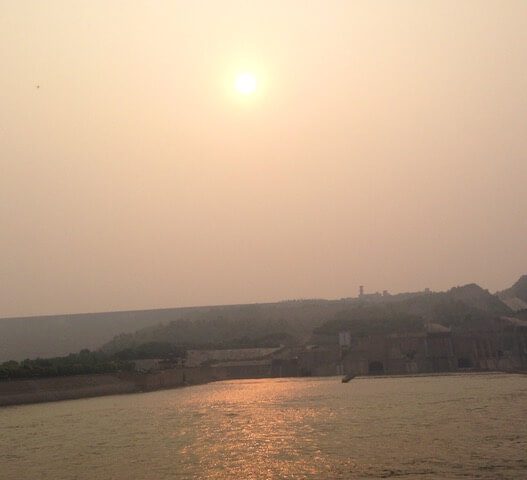
One of the things I really wanted to see while in China was the Yellow river13. This was my last chance to see it at Luoyang. I had read about Huang He in my teens and then in Coleridge’s poem, Kubla Khan14, there was the river Alph…. I have always wondered if it were the famed Yellow river. After all the poem had been penned while he was reading an account of China and fell asleep under the spell of opium. Then he woke up to spew out some of the most fabulous lines of poetry, immortalising himself in the endeavour:
And mid these dancing rocks at once and ever It flung up momently the sacred river. Five miles meandering with a mazy motion Through wood and dale the sacred river ran, Then reached the caverns measureless to man, And sank in tumult to a lifeless ocean;
This river with its antique roots in the Tibetan plateau and gushing waters near Xian, the legendary cradle of the Chinese civilisation, was comparatively calm in Luoyang, though it was really ‘huang’, the colour yellow. It had been dammed so that it would cease to bring sorrow to the people.
This river with its antique roots in the Tibetan plateau and gushing waters near Xian, the legendary cradle of the Chinese civilisation, was comparatively calm in Luoyang, though it was really ‘huang’, the colour yellow. It had been dammed so that it would cease to bring sorrow to the people. The Huang He had changed its course and flooded the lands within its reach much too often in the past. This year, 2020, has been another one where the waters of many rivers, including Huang He, ravaged China with floods.
Below the water flowed yellow and thick as we crossed the river on a suspension bridge. The bridge was red and broad and swayed as we walked.
The driver that took us around Luoyang dropped us at one end of the Xiaolangdi Scenic area, which housed the dam across Huang He. He said he would wait at the opposite entrance for us. I had thought we would have a stroll by the breezy river and maybe, there would be a bench where I could sit and gaze at the golden waters. Instead, we were back to hiking! The most fascinating thing during my walk to the Huang He was these tiny spotted red and black beetles that line the pathway. The beetles were unique and flat and did all kinds of gymnastics! They were fascinating to watch, and I would have stopped for longer if my threesome had not urged me to move on as we had only limited time.
We had to walk along the dam, cross the valley behind it, come out near the red bridge, cross over and walk some more to get to the other end, where our transport awaited us. Quite a walk, especially after the Longmen Grottoes in the morning.
We had to walk along the dam, cross the valley behind it, come out near the red bridge, cross over and walk some more to get to the other end, where our transport awaited us. Quite a walk, especially after the Longmen Grottoes in the morning.
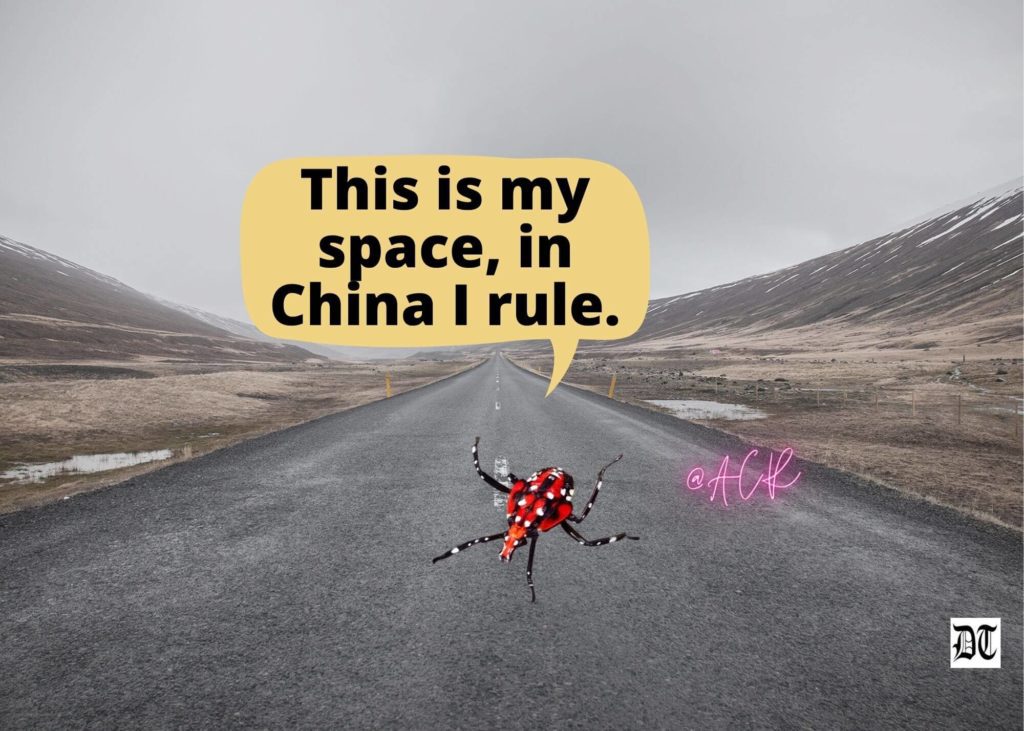
In China, one of the things that always fascinated me was the huge spaces that were given to everything. It was as if everything was big, even insects and beetles!
The distances were also big. But the people were tiny and slim. And the paintings and embroideries were also fragile and dainty…like the little embroidery of the cherry blossom that sits perched in my drawing room in Singapore. It was given to me by my friend Heidi. We had a lot of fun together. The thing that brought us closer together as we both saw the world as our home, borderless, beautiful, and inviting. We had both lived out of our countries of birth for more than two decades, had our children where we resided. In her family (two adults and four children), they held passports from three different countries. When they went through immigration, they were often asked if they belonged to the same family. What bound the family together was not their passport or nationality but the love, care, and concern they shared for each other. This is also what bound our friendship together.
The last day of our stay in Luoyang took us to the Shaolin Temple7 in the neighbouring county of Dengfeng. Built 1500 years ago, the temple is another embodiment of Indian Chinese collaboration in ancient times. The monastery was built by Xiamen of the Northern Wei Dynasty for the Indian monk Budhabhadra, fondly referred to as Batuo in China, who founded the Shaolin group of monks. Martial arts at the Shaolin temple were started later by another Indian prince turned monk, Bodhidharma, known locally as Damo.
The last day of our stay in Luoyang took us to the Shaolin Temple7 in the neighbouring county of Dengfeng. Built 1500 years ago, the temple is another embodiment of Indian Chinese collaboration in ancient times. The monastery was built by Xiamen of the Northern Wei Dynasty for the Indian monk Budhabhadra, fondly referred to as Batuo in China, who founded the Shaolin group of monks. Martial arts at the Shaolin temple were started later by another Indian prince turned monk, Bodhidharma, known locally as Damo. History seemed to have much intermingling in those days between the two neighbouring giants. I wonder why and when that changed to firing across borders?
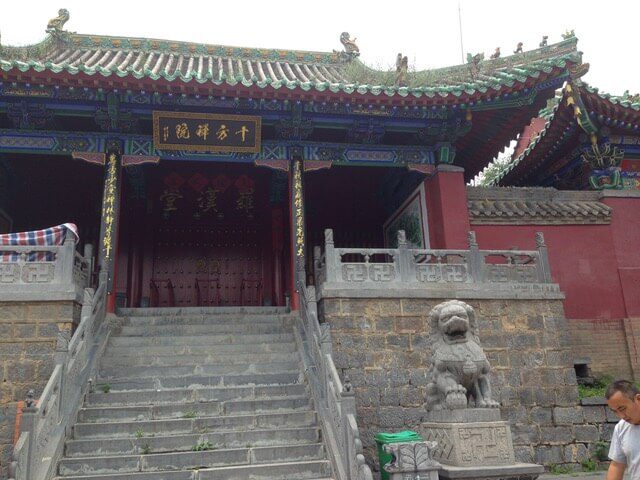
I was of course not that keen to go and visit a martial arts temple, however old. But what I saw took my breath away. Set against the rolling Song hills, the temple covers a large area. We had to take an electric trolley to get to the main building. The main building housed these huge stone cooking pots next to some pillars. These pots were so large that one could stew four or five men in them. We were told the monks cooked in these pots while hanging from pillars next to the humongous cooking utensils. It was a form of exercise. I wonder how many fell into the cooking pot while practicing (or didn’t they). The trees, here again, had strange features.
Even for someone as disinterested in Kung Fu as me, I was amazed by the show put on by the students. They were flying, leaping, and doing all kinds of fantastic moves that you only get to see in movies. It was a unique, outstanding, and breath-taking experience!
The other remarkable thing I noticed in China were the devout pilgrims that always crowded these ancient Chinese monasteries despite the majority of educated youngsters calling themselves free thinkers.
The other remarkable thing I noticed in China were the devout pilgrims that always crowded these ancient Chinese monasteries despite the majority of educated youngsters calling themselves free thinkers. I had seen them in all the places I visited which housed temples and Buddhas. My own housekeeper, a devout believer, used to enter our home and bow to the white ceramic Guanyin lamp before commencing work! The Guanyin is the Buddhist bodhisattva associated with compassion.
References
1. https://www.chinahighlights.com/nanjing/
2. https://www.travelchinaguide.com/cityguides/jiangsu/nanjing/
3. Terracotta Warriors by John Man, Bantam Press, 2008
5. http://www.china.org.cn/english/kuaixun/71861.htm
6. https://www.britannica.com/place/Luoyang
7. http://saolim.tripod.com/shaolin_frame/complete_history_of_the_sh.htm
8. http://self.gutenberg.org/articles/eng/luoyang_dialect
10. https://whc.unesco.org/en/list/1003/
11. https://www.bbc.com/culture/article/20150223-uncovering-caves-full-of-treasure
12. https://www.ancient.eu/article/874/ellora-caves/
13. https://www.visitourchina.com/luoyang/attraction/yellow-river-xiaolangdi-scenic-area.html
14. https://www.poetryfoundation.org/poems/43991/kubla-khan
15. https://www.britannica.com/biography/Sun-Yat-sen/The-revolution-of-1911
Visuals by Different Truths and pictures by author

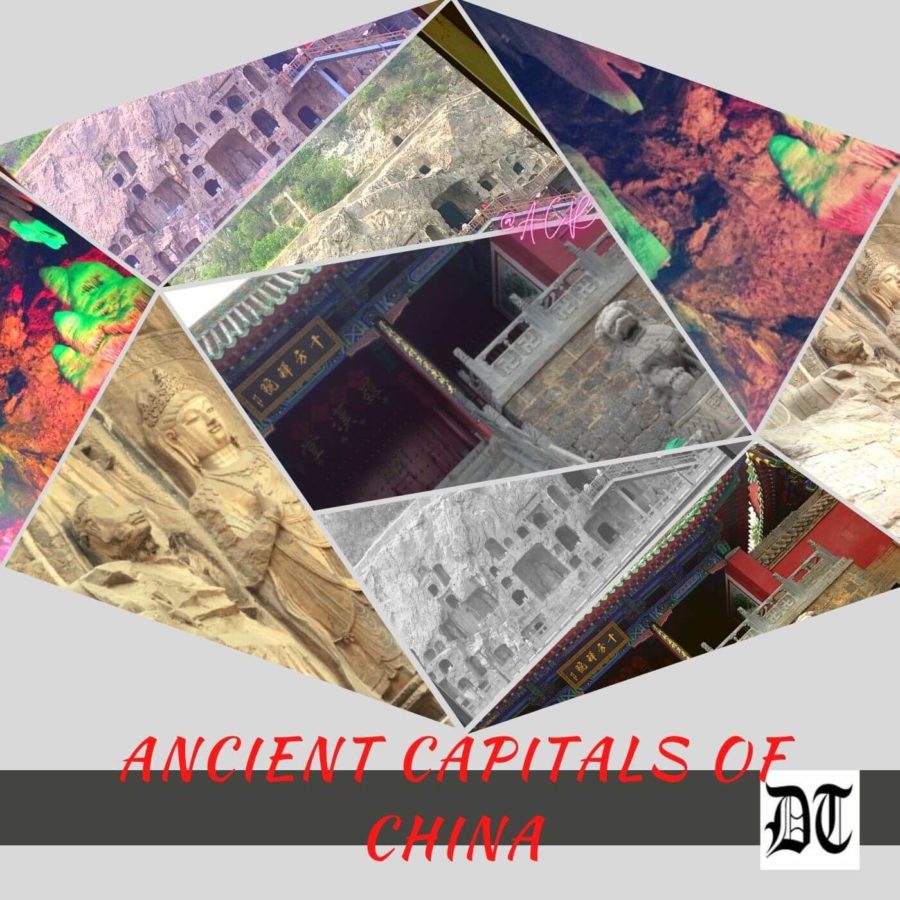














Beautiful piece on a place many may not have the good fortune to visit.